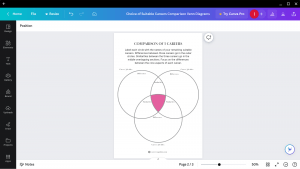Just 3 steps to choose a career? Is that all? Well, yes and no. Psychologists Gati and Asher (2001) propose 3 stages to the career decision-making process. Within each step there are smaller parts of the process that build up to the outcome of reducing the number of career choices at each stage. Within this article, I also recommend doing some preparation work before beginning the three steps. This ensures that you have enough self-awareness for carefully considering your priorities and preferences at this stage of life. To find out the preparations and three steps to choose a career, read on…

Preparation: Before You Choose a Career
Gati and Asher (2001) recommend asking yourself six questions before entering the career decision-making process. These six questions and a discussion of them can be found in the article: 6 Psychology-Based Questions to Ask Before You Choose a New Career.
I also recommend to my students that they do some preparation by getting clear about their values, strengths and personality (see Career Choice Psychology: 3 Steps to Choose a New Career for recommendations and useful worksheets). This is so that when you start the prescreening stage, you already have that self-awareness to base your judgements.
You are then ready to move on to step 1 of the PIC model (prescreening, in-depth exploration and choice) devised by Gati and Asher (2001)
1. Prescreening
The first step of this process uses a systematic approach using structured information about possible careers.
This is a logical way of using facts about the main features of careers to sort and reduce your broad list of careers to a list of 7 or less. Reduce a large list of careers to a very small list using your most important priorities and preferences to eliminate careers from the list that do not meet those conditions.
For example, if your top priority for your next career is to work for an ethical company or industry, then you would remove any careers from your list that do not fit with your values. If your next priority was a certain level of income, then you would next remove those careers that fall below that income threshold.
Continue to do this with your preferences, until you have 7 or less careers on your list.
Numerous studies have found evidence for the effectiveness of quickly reducing a list of potential careers down in this way. In one experiment, Gati and Kibari (2000) that information seeking in regard to career information, elimination and choice followed a similar pattern to this PIC model. They also found that participants tended to pick a career that better fitted with their preferences if they used this career selection model, compared to those who did not.
2. In-Depth Exploration
Those 7 careers are then explored in more detail using unstructured information. This can be from personal accounts, such as interviews, books, articles, podcasts, videos etc. It can also be in the form of networking and gaining experience.
The core aspects of each career are examined closely. How well do they fit with your preferences. How well do you fit with those core aspects? Would you be able to do the job? How far away are you from being capable of obtaining and fulfilling that role?
This step is where the requirements of each role are important. Plans for turning those careers into reality can be used to help reduce the list of 7 down to 3 careers.
3. Choice
With just 3 careers left, a comparison is possible.
I recommend to my students that they use a Venn diagram at this stage, especially to compare the differences (see Career Choice Psychology: 3 Steps to Choose a New Career).

Career Choice Venn Diagram worksheet available here.
There are then several methods of using scoring systems to see which career comes out better (e.g. pros and cons, attractiveness ratings etc.).
This is also the stage where your emotional responses to the career choices are useful. Your brain will favour a choice that seems most beneficial to you. It is fine to lean into that feeling. Psychologists suggest that a combination of logic and emotion in this decision can lead to greater career satisfaction.
If you would like to learn the full psychologist-recommended process for making better career choices…
The new course Career Choice Psychology: 3 Steps to Choose a New Career is available now on Udemy! Click the link to get instant access to the course, plus activities and resources that include Canva template links (no need for a printer!).
Thanks for reading! I’d love to hear your questions about choosing a career. What part are you finding difficult? Let us know in the comments below 🙂

References:
Gati, I., & Kibari, L. (2000). Strategies used to search for information for making a career decision.
Unpublished manuscript, Department of Psychology, Hebrew University, Jerusalem. Referenced in the article below.
Gati, I., & Asher, I. (2001). The PIC model for career decision making: Prescreening, in-depth exploration, and choice. In F. T. L. Leong & A. Barak (Eds.), Contemporary models in vocational psychology: A Vol. in honor of Samuel H. Osipow (pp. 7–54). Lawrence Erlbaum Associates Publishers.
